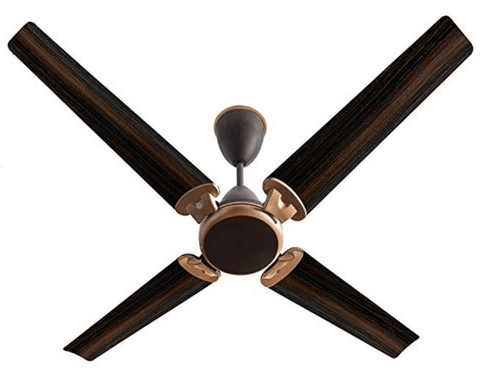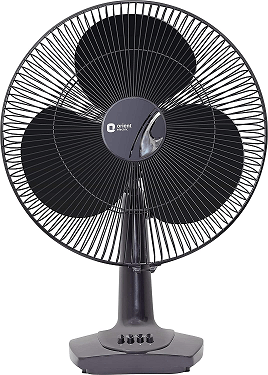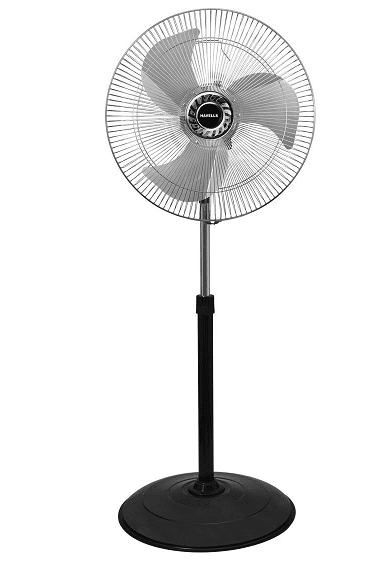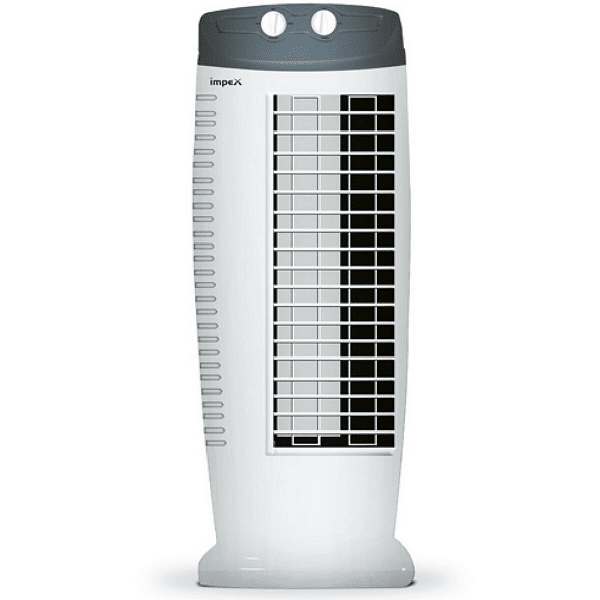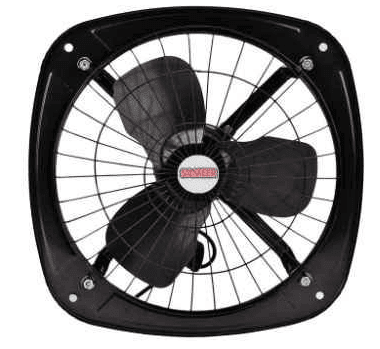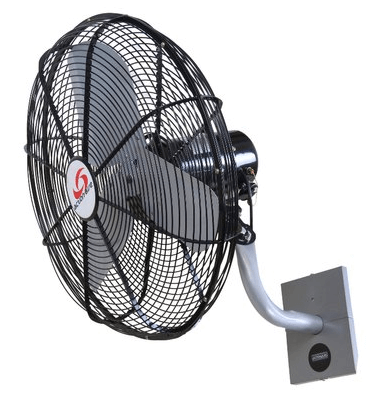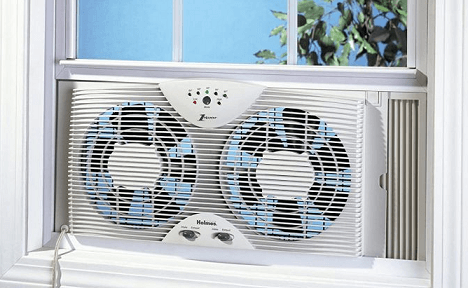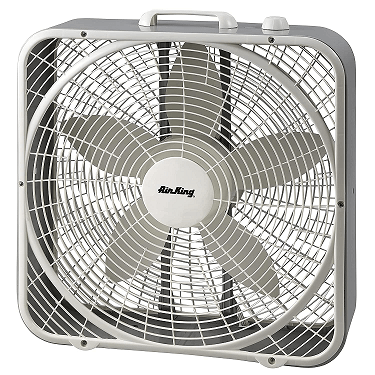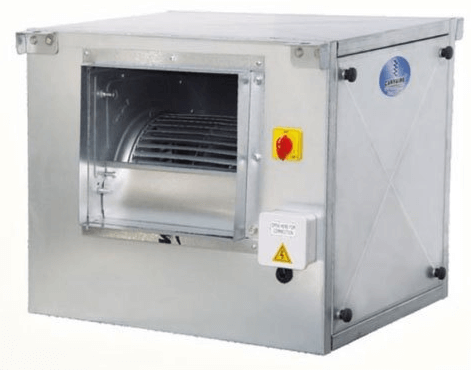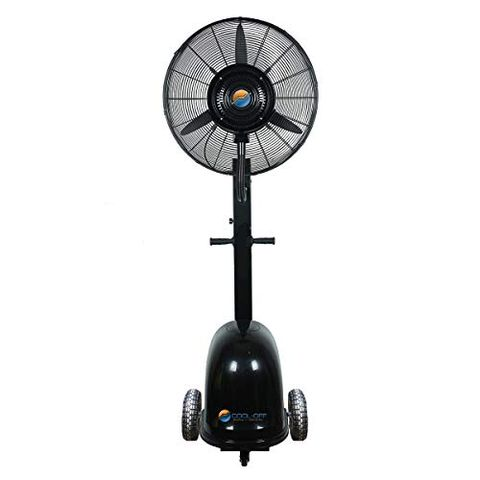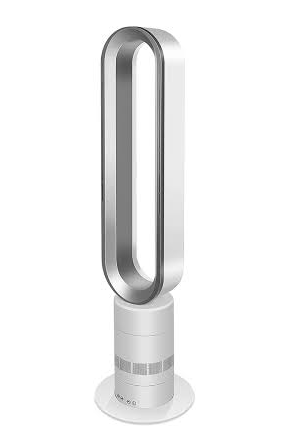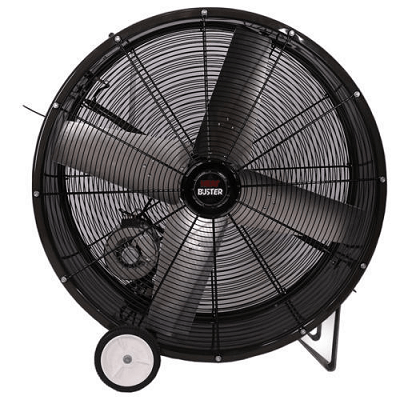Electric Fans help in circulating the air in a room and thus essentially create a “cooling” effect. We use them primarily in our homes and offices but we can also see electric fans for cooling in cars, computers, HVAC Systems, trains, buses and many more places. There are so many different types of fans. First, we have A.C. and D.C. Fans.
Then, we have propeller (axial) fans, centrifugal (radial) fans, compound flow fans, tangential floe fans etc. Another popular classification is based on the design of the overall fans shape and size. In this guide, we will take a look some popular types of fans.
Outline
ToggleIntroduction
A Fan is a rotary-blade machine that usually runs on electricity and provides a continuous air flow. It is essentially an electromechanical device that takes electrical energy and converts it into rotational mechanical energy (to create an airflow).
During summer season and hot times, we use ceiling fans, pedestal fans or table fans to circulate more and evaporate the sweat. Wall mount fans and exhaust fans help in pulling or pushing the air from garages, bathrooms, workshops.
Do you know why a ceiling fan has a capacitor? To find out, read this guide on Importance of Ceiling Fan Capacitors.
Different Types of Fans
Let us now take a look at some common and popular types of fans. We included only larger fans that you can find in homes, offices and small industries. There are several other types of fans such as radiator fans, computer fans, universal fans (fans that run on AC as well as DC power supply) etc.
Here is a list of 13 Types of Fans that we regularly use in our everyday life.
- Ceiling Fans
- Pedestal Fans
- Table Fans / Desk Fans
- Floor Fans
- Tower Fans
- Exhaust Fans
- Wall Mounted Fans
- Window Fans
- Box Fans
- Cabinet Fans
- Bladeless Fans
- Misting Fans
- Industrial Fans
Let us briefly see about these fans one-by-one.
Ceiling Fans
The most popular type of fan that we use in our homes, offices is a Ceiling Fan. As the name suggests, a ceiling fan hangs down from the ceiling of the room and circulates the air in the entire room. You can mount it from a flat ceiling, a slanting (sloping) ceiling, high ceilings, flush mount etc.
Ceiling fans are relatively inexpensive devices that are very easy to install and operate. Some ceiling fans also come with a reverse rotation option, which is helpful during winter times.
Table Fans / Desk Fans
If you want a fan that you can easily carry from room to room, then he first popular option is a Table Fan or Desk Fan. These fans are significantly smaller than ceiling fans and you can place them on tables, desks, stools or even on the floor.
Since Table Fans are small and directional, most of them come with oscillating feature. This allows the fan to oscillate horizontally between two angles in order to cover more area.
There are even smaller desk fans than run from USB outlets (or wall adapters). You can place these fans on your work desk or computer desk for a more direct air flow.
Pedestal Fans
If you take a regular table fan and fix a stand on its back, it essentially becomes a Pedestal Fan (this explanation is just for easy understanding). A Pedestal Fan is also known as a Stand Fan as it has a height adjustable stand to change the vertical position of the fan and a solid base to make it vertically stable.
Like table fans, even pedestal fans have oscillating feature. You can also carry these fans from room to room as they are not that heavy (and are meant to be carried, in case you need it).
Tower Fans
Like Pedestal Fans, Tower Fans are also vertical in nature. But the main difference is that a pedestal fan is an axial fan (motor at the center of the hub to which the blades are attached) while a tower fan has a centrifugal blower type fan.
Tower Fans look slightly fancy than other types of fans due to they enclosed structure. An advantage of tower fans is that they take very less space due to they tall and slim design.
Floor Fans
As the name suggests, we use floor fans on, well, the floor. At first glance, floor fans look very similar to table fans but if you observe closely, they usually don’t come with an oscillating function.
In spite of their size, floor fans are very powerful and people use them in living rooms, patios, balconies and even on the terrace to blast the air at our feet level.
Exhaust Fans
The main job of exhaust fans to pull air (primarily hot air) and throw it outside. Hence, you can see them close to the ceiling (this is where most of the hot air and fumes stays due to its low density) in kitchens, garages, bathrooms and even bedrooms.
Exhaust fans usually have very high rotating blades but some come with adjustable speed. A combination of a ceiling fan and an exhaust fan will cool down the room without an air conditioning unit.
Wall Mounted Fans
We attach a wall mounted or wall fan to the wall. These fans are very useful if you have a very high ceiling that even with a down rod the ceiling fan seems useless or if you have a very small room with not enough space to put a table or pedestal fan.
They look very similar to regular table fans and you can easily control the speed and oscillation using its pull strings.
Window Fans
Just like exhaust fans pull hot air from the room and push it outside, a Window Fant does the exact opposite. They pull fresh air from the outside and throw it into the room. From the name, it is clear that a window fan usually fits into a window with one or two fans.
The benefit of most window fans is that you can reverse the direction of the fan (the motor) so that it acts as an exhaust or intake fan whenever you need it.
Box Fans
A Box fan is an extremely versatile fan that you can use as a floor fan, a window fan, or a desk fan. The outer body of a box fan has a box (square) like structure with an axial blade fan in it.
Cabinet Fans
A cabinet fan is a special purpose fan that usually works with HVAC ducts. We actually fit them to the existing AC ducts to enhance the cool air flow from the air conditioning unit.
Misting Fans
Another specialty fan is a Misting Fan. As the name suggests, it squirts mists into the near by surrounding, thereby essentially throwing a cool air into the room. For the misting fans to work, they need a continuous supply of water. This water then forms into very fine mist with the help of water pumps and special nozzles.
Misting fans are very popular in tropical countries particularly in public places such as shopping mall or movie theatre entrances. Other places where you can use misting fans is to create pool parties, in gardens etc.
Bladeless Fans
A more modern type of fan is a bladeless fan. While it may seem some kind of magic, the working of a bladeless fan is very simple. The blades (or rotary vanes) of the fan are hidden in the pedestal (the structure below the main fan). Air from these blades is then ushed out using a toroid structure.
Industrial Fans
Even though industrial fans are extremely large and powerful than what we discussed so far, we thought of including an overview of them just as a comparison. Industrial Fans are usually large axial fans with very powerful motors. They help in pushing large amounts of air (or gases) in factories, warehouses and industries.
Conclusion
Fans are an important part of our lives. We use them to circulate the air and provide us with a sense of comfort during hot and summer times. In this guide, we saw different types of fans along with their basic functionality and use case.

